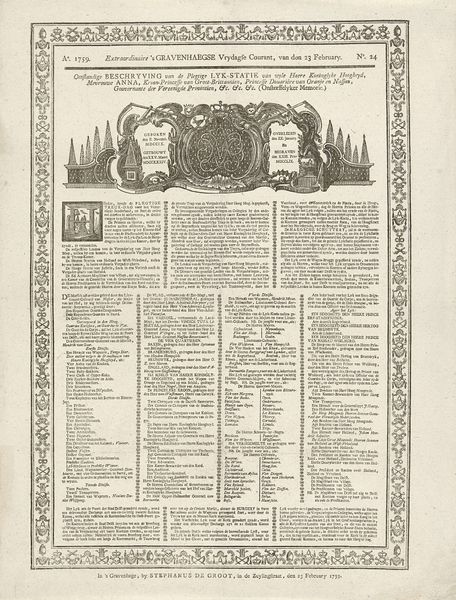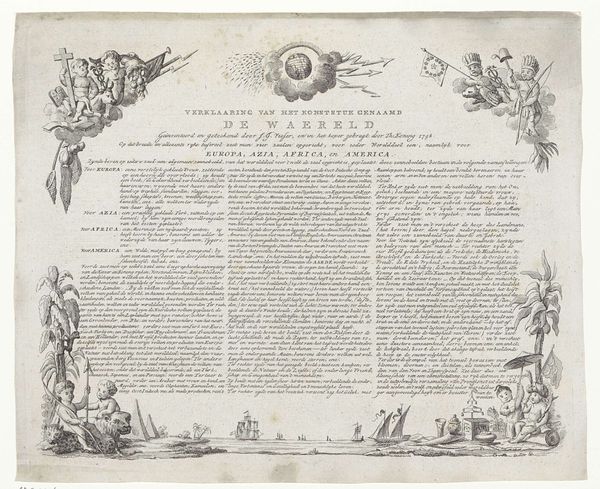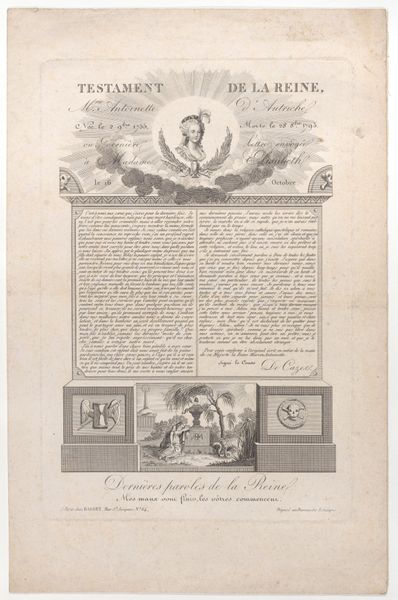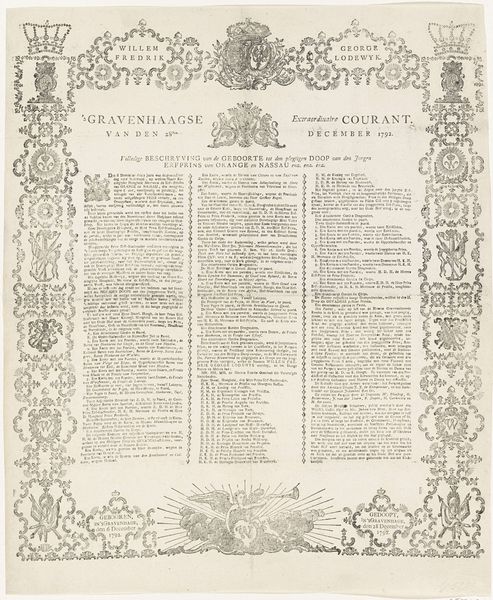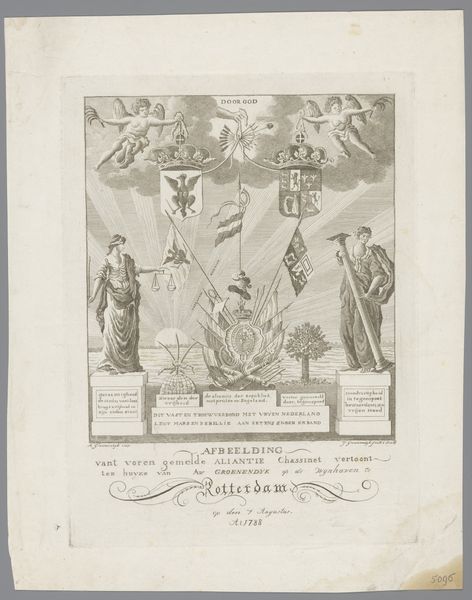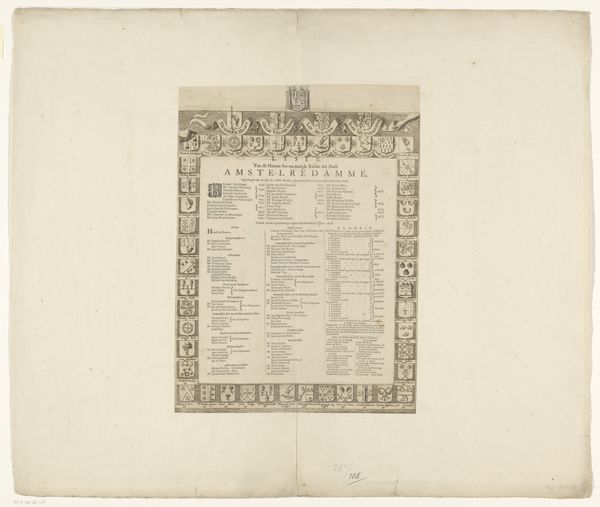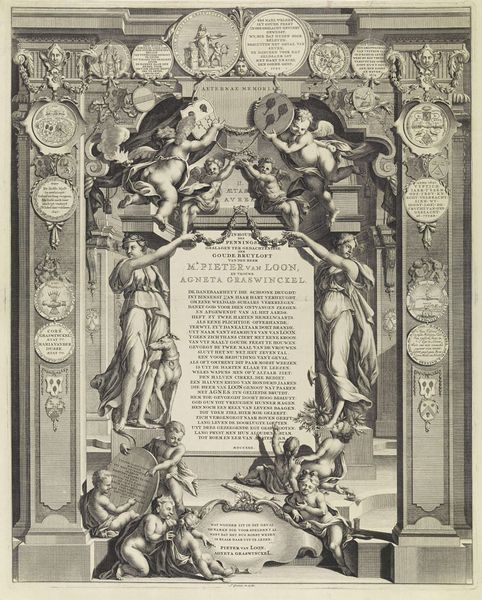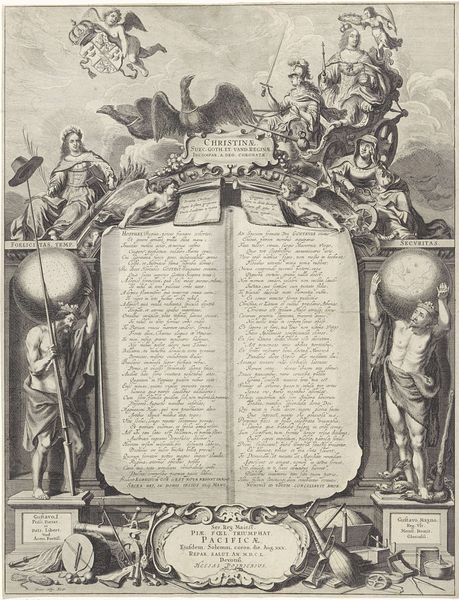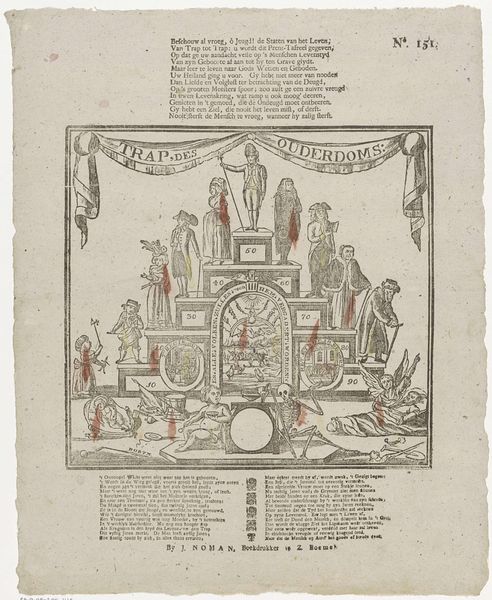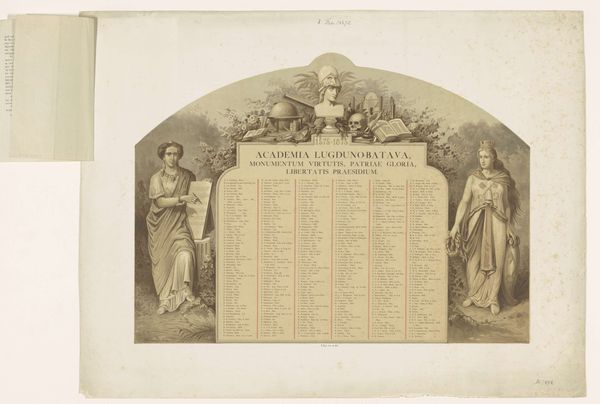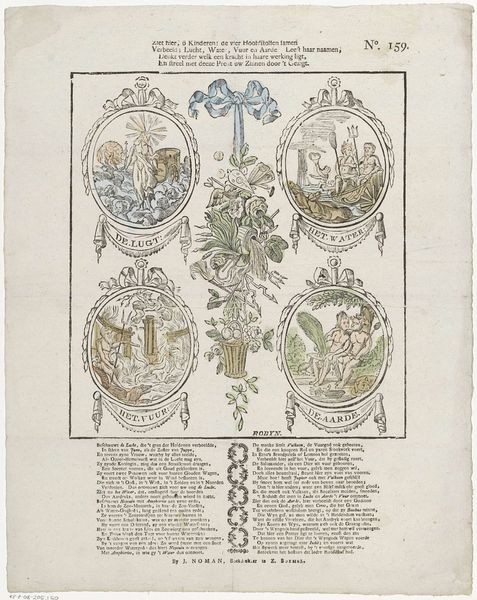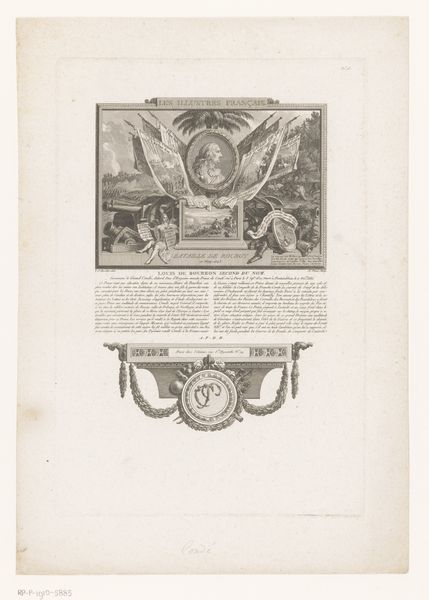
print, ink, engraving
#
neoclacissism
#
allegory
# print
#
ink
#
watercolour illustration
#
history-painting
#
engraving
#
watercolor
Dimensions: height 453 mm, width 309 mm
Copyright: Rijks Museum: Open Domain
Curator: Before us, we have "Declaration of the Rights of Man and of the Citizen," a 1793 print currently residing in the Rijksmuseum. It is a combined print utilizing ink and engraving, and at first glance it comes off as surprisingly celebratory. What are your thoughts? Editor: There’s a formality here—it feels so regimented, yet aspires to revolution. I find the architectural elements at the bottom visually grounding, which seems almost to contradict the message. Curator: Indeed, the architectural elements framing the text—those columns and garlands—are rendered in the Neoclassical style. We have to understand it was an appropriation by those hoping to legitimize revolution with allusions to Roman Republic virtue. Editor: And those almost pastel, washed-out colours, the quality of the watercolor... I suppose that downplays any violence associated with that period. What about the allegorical figures placed on top? What can they reveal? Curator: Crucially, they embody Enlightenment ideals. Justice stands beside Reason, all presided over by the All-Seeing Eye – a potent emblem in that era, meant to represent enlightened guidance. It signifies the revolution’s claim to rationality. It aims to instill faith in this order. Editor: So it’s attempting to marry abstract notions of rights and freedoms to a tangible sense of visual and civic order through specific, very deliberately employed printing and illustration processes. Interesting... considering it was only achievable by skilled labor. Curator: The production itself tells us something about the ideals this sought to spread and the limits it had. Those limits are material, yes, but are about gender and class and political persuasion as well. Editor: It forces one to think of the chasm that can open up between a text of principles and a context that produces it. The relationship of labor and concept, especially, interests me most here. Curator: Absolutely, that chasm between pronouncements and realities remains strikingly present even today. This print, then, is as much a historical document as it is a prod to consider the social and material realities of ideals.
Comments
No comments
Be the first to comment and join the conversation on the ultimate creative platform.
